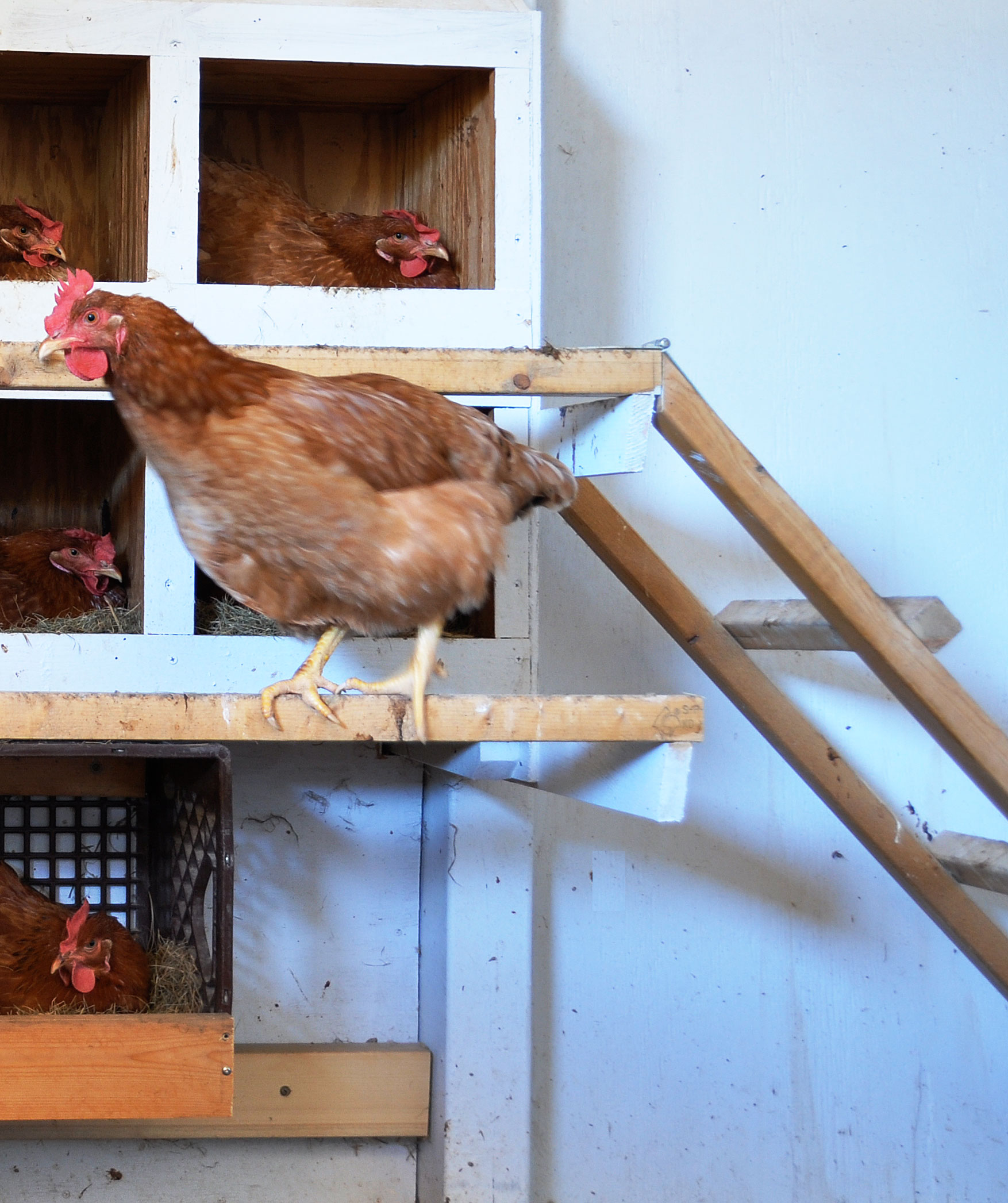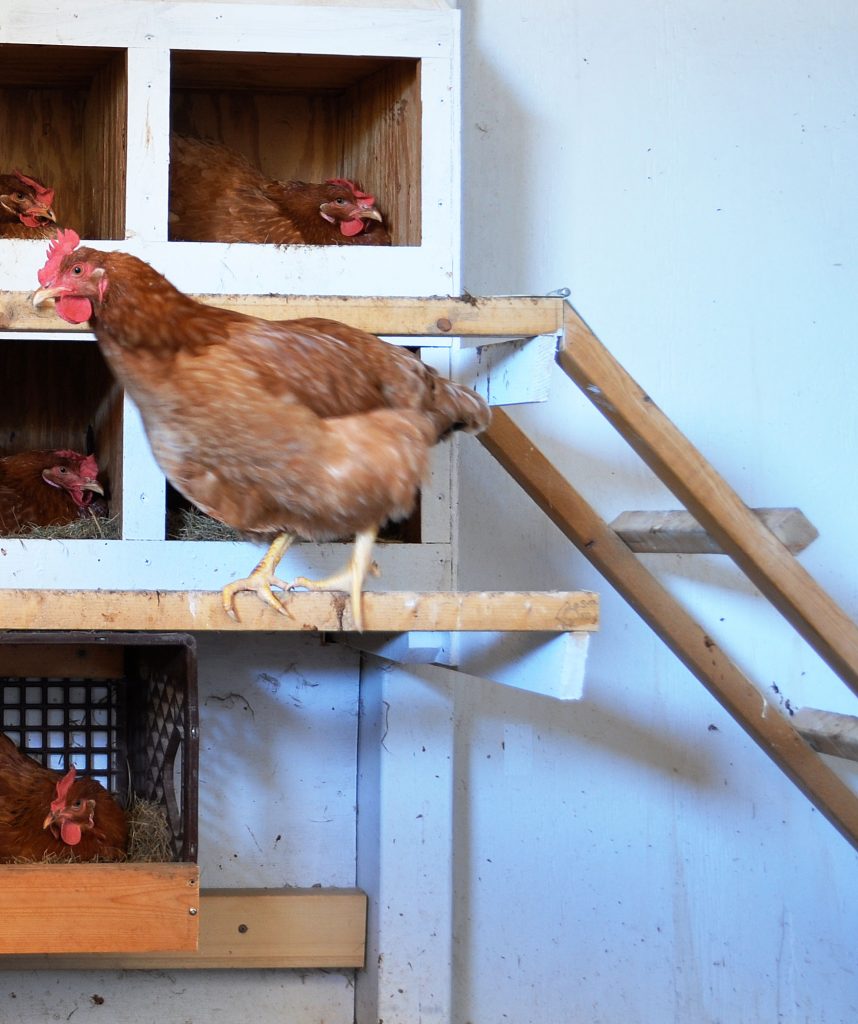
Furnishing the type of environment your laying hens seek when they are ready to lay an egg will ensure they lay in the location of your choice. With proper nest boxes, eggs will be laid where you can easily find them, and where they will remain clean and unbroken. Here are ten features hens look for in a perfect nesting site:
-
Privacy
Although some hens like to buddy up while laying, most hens seek a quiet, private place in which to lay eggs where they won’t be bothered by normal flock activities. Installing nests in an out-of-the-way place, such as a corner of the coop or behind a door, helps prevent distractions from the comings and goings of flockmates.
-
Darkness
Shielding nests from bright lights — for instance, by hanging flaps of fabric in the openings — provides darkness to discourage loitering and other nonlaying activities. Darkness also helps conceal laid eggs from flockmates that might be tempted to take a taste. Egg eating is much easier to prevent than to stop once it gets started.
-
Safety
Laying hens seek safety for themselves and for their potential future offspring. A nest that’s enclosed on top and on all sides but the front allows a layer to watch for danger in only one direction, making her safe from sneak attacks at the side or rear. Nests, of course, should be inside the coop for maximum protection from predators for both hens and their eggs.
-
Roominess
A nest should be large enough for a hen to stand and easily turn around. A nest that’s slightly large is better than one that’s too small and cramped, which can result in broken eggs. A good size for Leghorns and other lightweight layers is 12 inches wide by 14 inches high by 12 inches deep. For heavier breeds, make nests 14 inches wide by 14 inches high by 12 inches deep. For bantams, a reasonable size is 10 inches wide by 12 inches high by 10 inches deep.
-
Padding
Thickly pad each nest box with soft clean bedding for the comfort of hens and to prevent egg breakage. Hens will eventually mat down or kick out the nesting material, so be prepared to occasionally add more. Nearly every chicken keeper has an opinion on what makes the best nest liner. Options include wood shavings, shredded paper or commercially made nest pads.
-
Cleanliness
Ease of cleaning and sanitizing is important, because nests must be periodically emptied of soiled padding, scrubbed out and repadded. Change nesting material as often as necessary to keep eggs clean and unbroken. Do your hens deposit poop while hiding in nests or sleeping in them at night? Do they track mud on their feet? Do thin-shelled eggs get broken and mess up the litter? These and other management issues influence how often nesting material must be changed.
-
Parasite Free
Frequently cleaning out and replacing nesting material gives you an opportunity to check nests for mites and other parasites that bite and irritate laying hens. Know how to protect your flock from mites.
-
Location
Place nests on the floor until your pullets (young hens) get accustomed to using them, then raise the nests at least 18 inches off the floor by setting them on a platform or firmly attaching them to the wall. Raised nests discourage chickens from scratching in them and dirtying or breaking eggs.
-
Easy Access
For nests higher than 18 inches, either provide a ladder for hens to climb up, or install a perching bar in front of nest openings for hens to fly up on. Make sure the perch isn’t so close to the nest that a chicken resting on it will fill the nest with droppings. For most size chickens, the perch should be no closer than 8 inches from the edge of the nest.
-
Availability
Provide at least one nest for every four hens in your flock — more is better — so no hen with the urgent need to lay an egg will have to wait in line. But even if you install one nest for every layer in your flock, invariably your hens will have their favorites. They may all want to pile into the same favorite nest, or a hen may pace in front of her favorite nest and fuss at the current occupant. Don’t worry, your hens appreciate the nest boxes you provide, or they wouldn’t be so eager to use them.
And that’s today’s news from the Cackle Coop.
Gail Damerow, author, Storey’s Guide to Raising Chickens


